150+ year old warehouse and shop in Bunkyo-ku at risk of demolition

The owner of a historic shop in Bunkyo-ku, Tokyo announced plans to demolish the building and sell the land after having difficulty in maintaining the 150 year old property. Local residents have formed a group to oppose demolition and held a public symposium on December 17th to call for urgent action to protect the property.
The former Iseya Pawnshop, located alongside the Hongo-Kikuzaka slope, operated from 1860 to 1982. The property consists of three buildings including a 2-storey warehouse, shop and a 1-storey tatami room. The traditional warehouse dates from the Bakumatsu era, or the closing days of the Tokugawa shogunate (1850s ~ 1860s) and was relocated from Shikihama in Adachi-ku to its current location in 1887. The tatami room was built in 1890 and the shophouse was built in 1907.
Ichiyo Higuchi, a prominent author of the Meiji period who is featured on the 5,000 Yen banknote, mentioned the store in her writing as she lived in the neighbourhood for several years.Read more
Historic Japanese villa in NY looking for new home in Japan
 The current owner of a historic traditional Japanese house in upstate New York wants to relocate the home to Japan and is seeking a new owner.
The current owner of a historic traditional Japanese house in upstate New York wants to relocate the home to Japan and is seeking a new owner.
The ’Pine and Maple Palace’ was initially exhibited at the St. Louis World Fair in 1904. It was modelled in a style of architecture dating from the Momoyama period (late 1500s), but with some western features. After the fair, Emperor Meiji donated the villa to Dr. Jokichi Takamine, a successful chemist who had emigrated to the US. Takamine relocated the villa to his summer home in upstate New York. In 1909, Prince Kuni Kuniyoshi and Princess Kuni stayed in the villa during a visit to the US. The house was sold upon Takamine’s death in 1922. Read more
Suginami-ku buys historic villa for 3.1 billion Yen
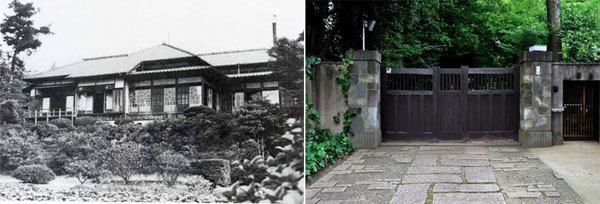
Suginami ward in Tokyo has purchased the historic Tekigai Villa in Ogikubo 2 Chome for 3.1 billion Yen and plans to preserve the house and restore its gardens.
Tekigaiso was built in 1927 and designed by architect Ito Chuta. Ito was a leading architect in early 20th century Imperial Japan and had designed the original Meiji Jingu Shrine, the Okura Museum of Art near Hotel Okura in Akasaka, and the Tsukiji Hongan-ji Temple.Read more
Mitsui starts work on Nihonbashi 2 Chome Redevelopment
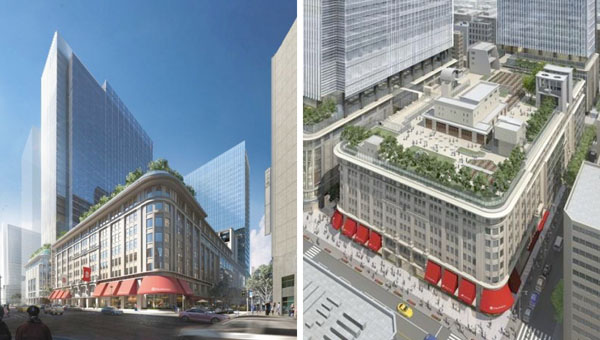
On November 13, Mitsui Fudosan announced that they have started construction on the Nihonbashi 2 Chome District Redevelopment Project. This redevelopment forms an important part of the second stage of the Nihonbashi Revitalisation Plan.
The 2.6 hectare site includes the historic Nihonbashi Takashimaya Department Store. The important cultural property was built in 1933 and will be retained as part of the new development. The rooftop terrace and gardens will be upgraded and expanded to cover a 6,000 sqm space with footbridges connecting the rooftop to the neighboring office buildings.Read more
Hope fades for historic Yokohama warehouse as demolition begins
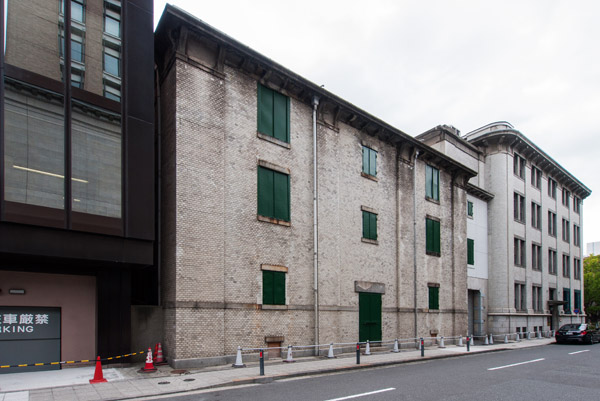
Despite the best efforts of architects and historians from across the country, the owner of the Former Mitsui Bussan Yokohama Warehouse in downtown Yokohama is pushing ahead with demolition.
On November 5, a notice was posted outside the 104-year old building indicating the start of demolition. The building will be completely razed by mid-February 2015. The owner, Tokyo-based real estate and expat leasing company Ken Corporation, has ignored pleas from various preservation groups.
The Former Mitsui Bussan Yokohama Warehouse was designed by Oto Endo and built in 1910. Endo was a pioneer in designing reinforced-concrete buildings and this was one of the earliest structures in Japan to incorporate RC in the construction. He also designed the adjoining Mitsui Bussan Yokohama Office Building in 1911, which was the first building in the country to be built entirely out of reinforced concrete. The two buildings formed an important part of Yokohama’s silk trade, and the warehouse was used for the storage of silk.
Shirokanedai Institute of Public Health (c1938) to be restored
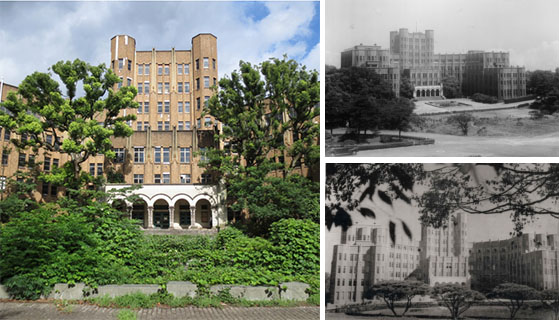
The historic Institute of Public Health building in Shirokanedai, Minato-ku, Tokyo is going to be restored and converted into a centre for palliative care for cancer patients, a children’s club and short-term child care facility.
The Institute was built in 1938 as a medical training and research centre. The 76-year old building has a total floor space of 15,000 sqm with two basement floors, five floors above ground and a 3-storey tower. It was designed by architect and engineer Yoshikazu Uchida. Uchida designed a number of buildings for the University of Tokyo and also worked on the design of the Dojunkai Apartment buildings across Tokyo and Kanagawa Prefecture. His style became known as ‘Uchida Gothic’.Read more
Singapore developer buys Seiko Estate, plans to build luxury residences
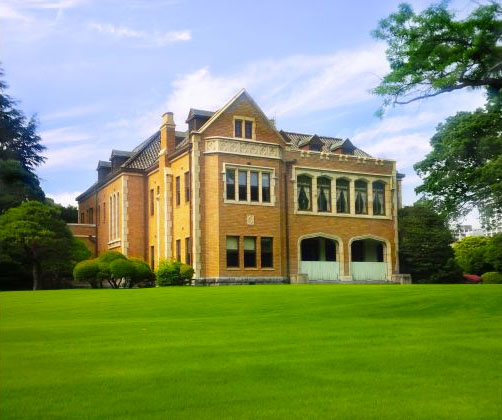
Singapore-based City Developments (CDL) and an US investment firm have purchased the historic and expansive estate of Seiko founder Kintaro Hattori in Shirokane for approximately 30.5 billion Yen (279 million USD).
CDL plan to develop luxury condominiums on the 16,815 sqm site and also plan to conserve the historic residence of Mr. Hattori which was built in 1933.Read more
